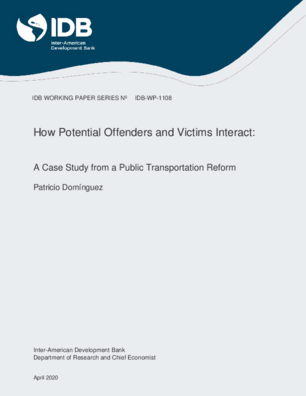How Potential Offenders and Victims Interact: A Case-Study from a Public Transportation Reform
Date
Apr 2020
This paper models crime rates as a function of the interaction between potential offenders and victims. In particular, the paper studies robbery of bus drivers, a crime that remains common in cities throughout the world. Exploiting the timing of a significant reform introduced in Chile in the public transportation sector and detailed administrative data on crime incidents, the paper shows how victims' propensity to resist an attack can alter the level and nature of criminal activity. The paper also finds a large decline in crime after the implementation of a technological innovation that eliminated cash transactions on buses. The results suggest a strong relationship between victims incentives, cash presence, and crime.




